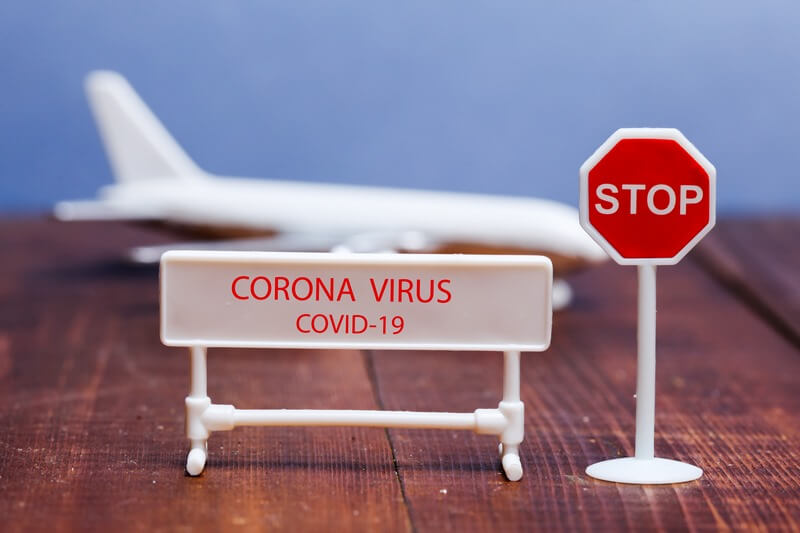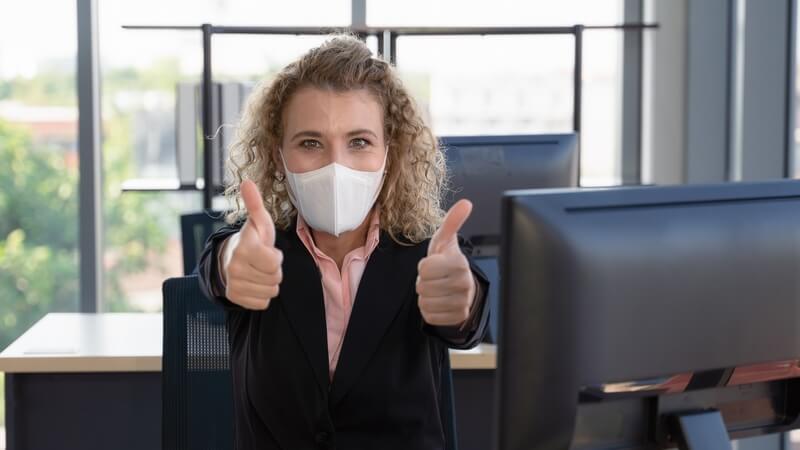
#1 How to protect employees & operations
This week I am sharing my Top 10 Planning Tips For Covid-19. As I am writing this blog, the number of COVID-19 confirmed cases is over 76,000 people worldwide. The majority of the outbreak is in mainland China, but twenty-seven other countries have confirmed cases. The number of deaths increased to over 2,000 this week.
In the meantime, the World Health Organization (WHO) and scientists worldwide are working to limit the virus’ spread. They are also racing to develop a vaccine. Although reports suggest that for many, the virus has a minor impact, some people have severe and even fatal reactions. So, I am sharing ten things that businesses can to do to protect their employees and operations.

#2 Dust off and expand your pandemic plan
I expect that most businesses have dusted their pandemic plans off by now. If your organization has not, you should do it immediately. Although the WHO and health authorities like the CDC, have not declared a pandemic, the outbreak has spread worldwide. Only Latin and South America appear to be outbreak-free. In Africa, Egypt has one confirmed case. And although the reported number of instances outside of China remains small, there is still a possibility that the virus could explode. Read my recent blog, Covid-19 Is It The Next Pandemic, for more on this topic.
Many companies have not taken an active look at their pandemic plan since the H1N1 (2009), SARS(2020), or MERS(2012) outbreaks. Although best practice suggests that you should update your business continuity and disaster plans yearly, the reality is that documents often get outdated quickly. My suggestion is that you adjust your program from a pandemic-only format to one that addresses any infectious disease outbreak. By doing this, the plan can is usable for any contagious illness event such as measles, norovirus, Zika, Ebola, or smallpox.

#3 Activate your Crisis Management Team
Along with your pandemic plan and protocols, you should activate your crisis management team to respond to any internal incidents. If your company is not experiencing any direct impacts, the crisis management team can assist with preparedness efforts. My suggestion is that you meet with your core team and any new stakeholder groups weekly, if possible. By doing this, you have the opportunity to keep everyone up-to-date, the thinking fresh, and ensure that COVID-19 stays top-of-mind for the duration of the event. For this crisis, it looks like this first wave will likely go on into March or April. Additional waves of the virus outbreak may occur in the summer and fall.
Regardless, it is good to prepare your team for a long-term event, with short-term bursts of reacting to employee risks, if they arise. It is also a way to refresh your response muscles. By doing this, you ensure that you have everyone on-board that could be needed. For example, legal, human resources, employee engagement, talent, facilities, real estate, IT, brand, and communications teams all have a role to play in an infectious disease outbreak event. The sooner that you engage them and involve them in the planning and response, the more ahead of the game, you will be. It can be challenging to get people who are not oriented to crisis management to understand that business, as usual, may need to be suspended and disaster protocols enforced when required.

#4 Engage a medical expert
None of us can know everything. This step seems like second nature to me since I have prior experience with a pandemic response. Still, it amazes me how many companies do not have a medical professional on retainer. Sadly, the development of a pandemic plan remains a check-the-box exercise for some. With as long as I have been in the business, I have learned not to rule any incident out. As of writing this, I have been part of multiple terrorists, hurricane, wildfire, earthquake, flash flooding, bomb cyclones, infectious disease, protest and power, and network outages. And this is only a partial list!
For this reason, I am an advocate of engaging fellow experts whenever needed. What many do not realize is that the regulations and laws in many countries give an expansive breadth of response powers to public health authorities. They can impose limits on public and individual freedoms. As one example, check out the Regulations and Laws That May Apply During a Pandemic on the CDC’s website. Due to this, engaging infectious disease experts are helpful as they can assist companies to understand and navigate this system. These experts can act as a go-between with local public health, support employees, and provide valuable insight. For this reason, the invaluable support they provide far outweighs the cost.

#5 Create an internal crisis support network
To protect your employees, operations, and economic viability, I encourage you to nourish your networks. By this, I mean that besides rallying your crisis management team, you should be connecting with your key stakeholders internally. On an ongoing basis and for the duration of the event, you should strengthen your organizational matrix. By delving into what each of your crisis response groups can bring to the table, you will gain a better understanding of real-time strengths and gaps.
It is up to the crisis leads to set the tone by taking a preparedness mindsight ahead of impacts. It can be challenging to pull colleagues away from their essential work of keeping the business running. Empowering your key players allows them to understand what they can be doing to protect the company and limit impacts. By communicating early and often, it gives you time to respond confidently instead of reacting. I have found that most people in this situation are ready to help but usually do not know what to do. By creating forums, like holding meetings, developing shared worksites, and leveraging essential software, you keep people knowledgable and invested.

#6 Use your communication plan
Succesful infectious disease planning for the novel coronavirus includes a communication plan. In my experience, communication is always the most challenging aspect of an event to get right. I sometimes think it is impossible to master. It comes down to people having different ideas about what cadence or channels are best.
Regardless, try your best. Having pre-event protocols comes in handy so that you are working from an established playbook. Even if you do not have a plan in place, the communication staff are invaluable in developing action steps. Leverage your brand management, public relations, internal communications, and social monitoring experts. They understand the company’s culture best. These teams will guide you about how best to communicate internally and externally.

#7 Limit or impose travel restrictions
Another one of my top ten ten planning tips for COVID-19 is to consider limiting or imposing travel restrictions. Many companies have employees who travel. Right now, the risk of infection far outweighs most business reasons to go to China. Some companies in the Asia-Pacific region have imposed a freeze on regional travel. You will want to look carefully at upcoming trips to suppliers, customers, or meetings and decide what you can cancel, shift or postpone, if necessary.
Infectious disease planning for the novel coronavirus is similar to actions you would take or any outbreak. By now, you have likely heard that many airlines and some countries have banned travel to and from China. The WHO has a useful tip page with travel advice. Stateside, the CDC has a webpage with Coronavirus Disease 2019 Information for Travel. It makes sense not to take unnecessary risks.

#8 Don't forget third party vendors
As I mentioned in my recent blog, Coronavirus-Prepare For Supply Chain Impacts, the likelihood of supply chain disruption is high. Reach out to your key suppliers to understand their crisis response plans. You should expect some impacts in your supply chains as many goods and parts originate from China. To be prepared, your business must determine where these impacts may occur. You should also figure out a workaround strategy for the duration of the event. Do the same for critical vendors.
Do think about worst-case scenarios. You should calculate how long you can go without a particular item, and when not having it will impact you economically. Decide if there are there alternative suppliers that can provide you with what you need. Think about whether you can suspend product lines if required. Then, decide if you can ramp-up alternative products or business lines to limit impacts to your bottom-line.

#9 Get supplies if you can
Reports of shortages in personal protective equipment (PPE) like masks and hand sanitizer are showing up. If there is anything you need that you cannot do without, you should consider stockpiling it now. Understandably, there have been public requests for people and businesses not to store the protective equipment because it is impacting the ability of hospitals to get the gear. I found a post by the Greater New York Hosptial Association from the 18th, stating that some hospital systems are experiencing shortages.
I completely support the call for critical organizations to get this equipment first. However, I am also aware that it is human nature for our survival instincts to kick in. Businesses need to continue to run, too. Infectious disease planning for the novel coronavirus includes an inventory of your supplies and third-party vendors. In particular, if your business on items that come from China, I suggest you prepare for shortages if you cannot procure it elsewhere. Or, you should implement a conservation strategy where needed.

#10 Educate and keep employees updated
My final top 10 planning tips for Covid-19 but possibly most important is to communicate on an ongoing basis with employees. One of the most challenging aspects of managing a crisis event can be keeping employees updated and getting them factual information. Employees are concerned, and some are worried. I suggest partnering with Human Resources to adopt a monitoring process of employee inquiries where they get escalated to the crisis team. Implementing this strategy allows you to understand employee concerns and directly address issues when they arise.
Rumor mills and misinformation can run rampant during an infectious disease event. If you do not provide them with the information, they will get it from social media or other sources. Silence can instill unease and mistrust if your employees do not feel you are transparent. They are looking to you assure them you are doing everything possible to protect them. To be effective, you will want to deliver timely messaging.
Question and answer forums can be useful for line employees. More targeted guidance for managers and facilities personnel is helpful, as they are your first line of defense. By empowering them with accurate information, they can be your best supporters in spreading facts and keeping employees from panicking. These are my top 10 Planning Tips For Covid-19; let me know if there are any critical steps you would add.
